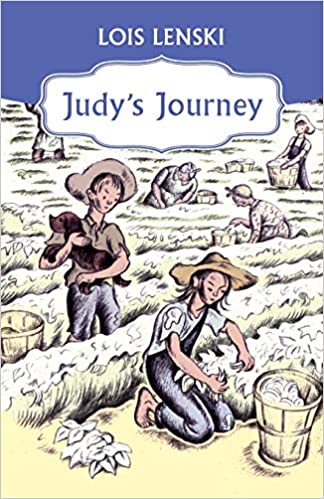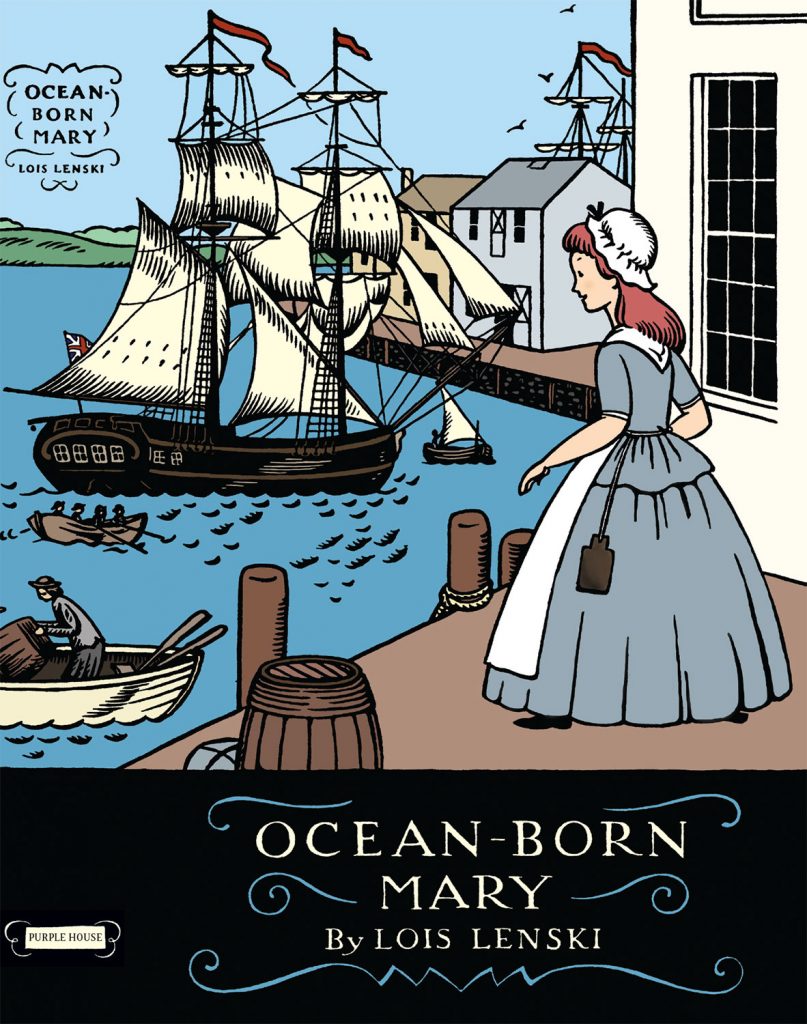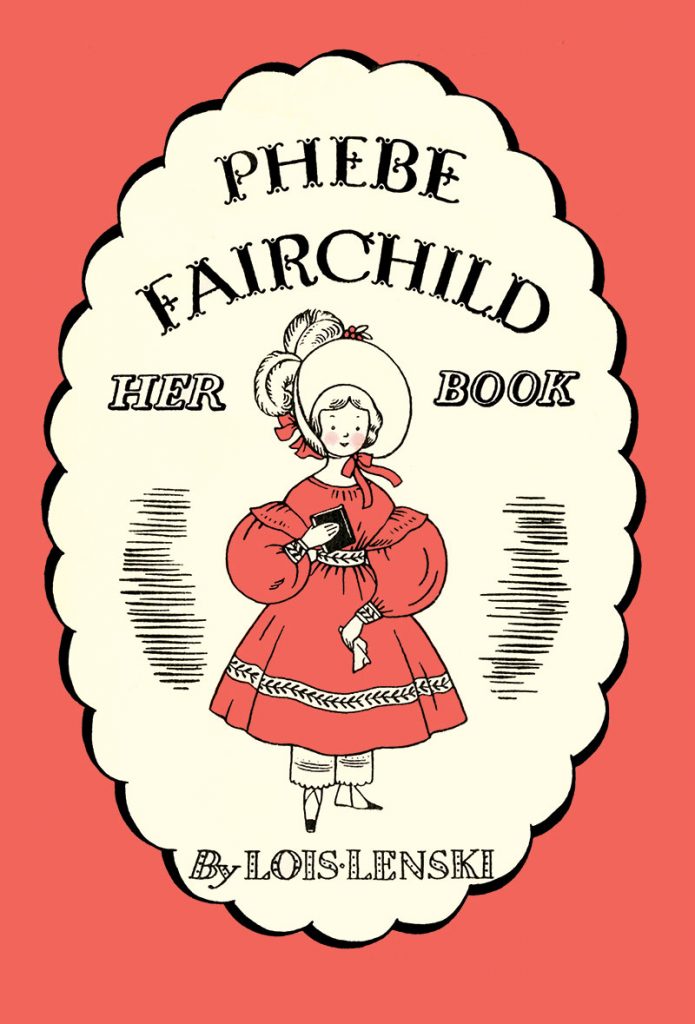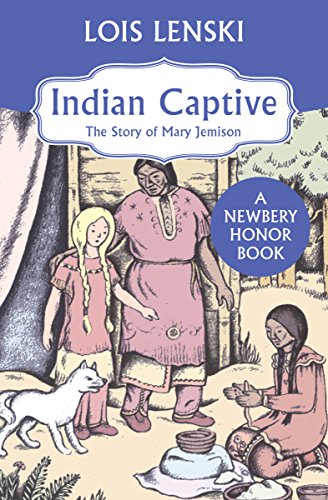Lois Lenski books continue to be enjoyable and insightful reading for all ages.
Lois Lenski Books
Yesterday I shared a long-overdue introduction to an author who has greatly influenced my life. Isn’t it funny how it happens? First, Mom read Puritan Adventure and Strawberry Girl aloud. Then, because most of Lenski’s regionals were housed in my room, I read and re-read Judy’s Journey, Mama Hattie’s Girl, Blueberry Corners, Indian Captive, and others.
While pursuing my M.A. in Children’s Literature at Hollins University, I decided to examine Lenski’s female characters for my thesis. Six of her books paired very conveniently for my purposes, and I was thrilled to find redemptive patterns in her storytelling.
Now I’m rediscovering them with my family. I can’t cover them all in one post; I just want to whet your appetite.
The Small books
The Little Sailboat. Random House, 2003.

Lenski wrote small books about the Smalls when her boys were little. She wrote about the Small family and individuals of various occupations surnamed Small. (Were they extended family members? We are never told. Tinker, the dog, is often along for the ride, and the Little Auto appears beyond its own book, so perhaps Papa Small wears many hats.)
They describe an ordinary day-in-the-life of a cowboy, policeman, fireman, and sailor, all worthy aspirations for typical little boys who never dream of office or factory jobs. (What would the matchbox version of a desk with a chair and paperwork look like, I wonder?)
- The Little Sailboat (which is included in our Hope on the Horizon summer reading program) introduces a simple sailing outing, complete with joys (fishing), dangers (falling overboard! a storm!), and nautical terminology. All is reassuringly well and cozy at the end. “And that’s all” about the Small books.
One important observation: there is a board book edition that does NOT include all the nautical descriptions and definitions. I recommend the hardcover version.
Why I admire Lenski’s regional and historical fiction
Lenski was serious about her research. Before she wrote one of her regional books, she made an extended visit to a specific part of the country to learn the people, their habits, their stories, and their dialects. You really come to appreciate the diversity of our nation when you see a coal camp, or a migrant field, or aggravatin’ neighbors through a child’s eyes.
In both the regionals and the historicals, the children constantly ask questions. How do you keep strawberries kept fresh while they are transported up north? How are such heavy ropes made? In this way, the reader appreciates the details of life.
There are enough fights, snakes, danger, true hardship, and ornery characters to keep the story lively, with a happy ending that is satisfying and not saccharine.
All right, all right, on to a few more summaries.
Regional fiction
Strawberry Girl, HarperCollins, 1945.
Judy’s Journey, Open Road Media Teen and Tween, reprint, 2011.
- Strawberry Girl and Judy’s Journey both emphasize families working hard in the fields. Birdie Boyer (Strawberry Girl) has a home, but highly undesirable neighbors. This Newbery-award winner is a great introduction to Lenski’s charm.
- Judy Drummond’s family is evicted from their sorry tenant house and travels the east coast, harvesting whatever crops are ready. She longs for a home with a white picket fence, bears the regular heartache of meeting friends and losing them, and endures the disappointment of missing an education.
Historical fiction
Ocean-Born Mary. Purple House Press, 2020.
Phebe Fairchild, Her Book. Purple House Press, 2020.
Indian Captive. Open Road Media, reprint. 2011.
Okay, I have to share one quote from my thesis here:
In these historical novels, the maturation process from girlhood to womanhood is a prominent theme. Although the characters of these books bear strong resemblances to one another, each is different. Often the family structure shapes the difference. The closely-knit families in Puritan Adventure and Blueberry Corners allow the child to transform the home, specifically by celebrating Christmas, which had once been forbidden. Phebe Fairchild and Ocean-Born Mary find their adventures outside their immediate family, returning home without significant alteration. Mindwell in Bound Girl of Cobble Hill and Molly of Indian Captive are personally transformed as a result of growing through adverse circumstances, making a home for themselves by uniting with a new family or culture. Thus, the setting and circumstances surrounding home and relationships with the other characters determine the course of the heroine as she reaches womanhood.
In Pursuit of Womanhood: How Lois Lenski’s little girls learn to change their world
Exciting, right?!
Start here for Lenski’s historical fiction
You don’t usually hear about these, except for Newbery-honor winning Indian Captive. This is a pity, but so much more reason to delight in the forthcoming reprints of Phebe Fairchild, Her Book and Ocean-Born Mary from Purple House Press.
- Although Ocean-Born Mary has heard the story of the pirate who saved her life at birth, nothing can replace meeting him for herself and deciding whether he is truly kind, or whether he is evil after all.
- Phebe Fairchild returns to her father’s roots while he is away at sea and must be reconciled to the family he has distanced himself from. Her book is a copy of Mother Goose, a gift from her father which is unworthy folly in Aunt Hannah’s mind, and must be kept hidden.
- “Molly” (Mary) Jemison was taken captive from her family at fifteen and lived with Native Americans for the rest of her life, in spite of opportunities to return to “civilized” society. She learns much from the women of the tribe, from the importance of work to a love of nature and the Seneca people.
Although Lenski couldn’t interview her subjects personally, she based several of her historicals on real people and events. She excelled at showing how people are multi-faceted, even allowing her heroine to wrestle with the concept of “who is my enemy?” Are all Indians bad? Could a pirate change into an honest man?
Her conclusions are always hopeful, which is why Lois Lenski books continue to be enjoyable and insightful reading for all ages.
P.S. You may also recognize Lenski’s illustrations in the Betsy-Tacy books and many other books from her lifetime. She was prolific.
Enjoy your discoveries, and please come back and tell me about them!
If you missed the first Lenski post, you can find it here.
Join our Hope on the Horizon summer reading program! We also created a 75+ title desert island booklist since we’re all feeling stranded right now (and because it’s almost as much fun to brainstorm booklists as it is to actually read the books).
More classic prolific authors? How about Henty or Lovelace?
We are participants in the Amazon LLC affiliate program; purchases you make through affiliate links like the one below may earn us a commission.Read more here.
Support our writers and help keep Redeemed Reader ad-free by joining the Redeemed Reader Fellowship.
Stay Up to Date!
Get the information you need to make wise choices about books for your children and teens.
Our weekly newsletter includes our latest reviews, related links from around the web, a featured book list, book trivia, and more. We never sell your information. You may unsubscribe at any time.
We'd love to hear from you!
Our comments are now limited to our members (both Silver and Golden Key). Members, you just need to log in with your normal log-in credentials!
Not a member yet? You can join the Silver Key ($2.99/month) for a free 2-week trial. Cancel at any time. Find out more about membership here.






